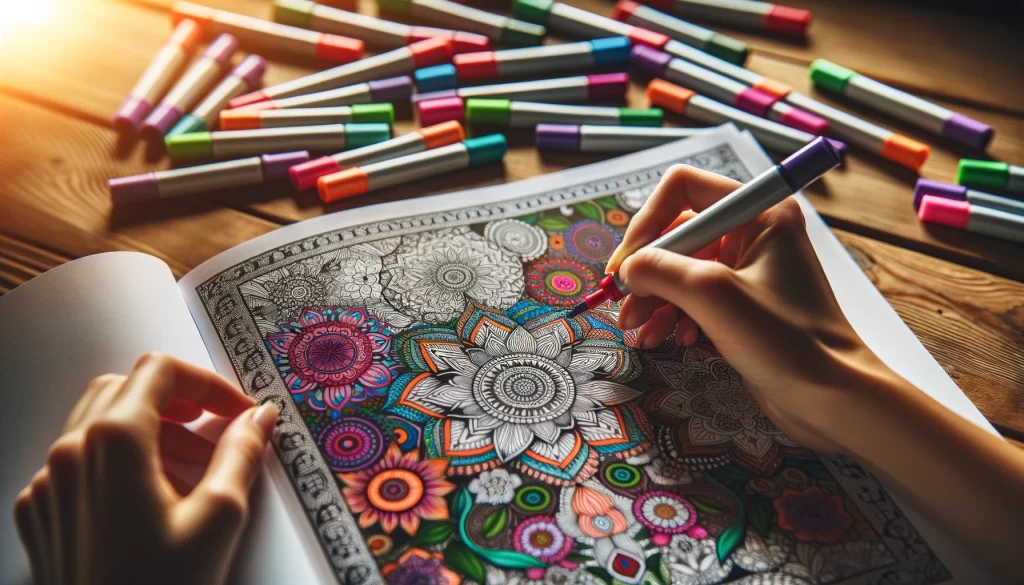Coloring has surged in popularity among adults as a calming and creative outlet. What once was a pastime primarily for children has evolved into a sophisticated hobby, with enthusiasts exploring various mediums to bring their artwork to life. Among these, markers have emerged as a favorite for their vibrant colors, ease of use, and versatility.

If you’re new to the fun of coloring books and looking to delve into the world of markers, this article will guide you through everything you need to know to get started.
Understanding Marker Types
Markers come in a wide array of types, each offering different effects and suited for specific techniques. Here’s a brief overview:
- Water-based markers are known for their ease of use and cleanup. They’re great for beginners and work well on most types of paper without bleeding through. However, they may not be as vibrant or long-lasting as other types.
- Alcohol-based markers provide a more saturated, blendable color. They’re preferred by enthusiasts looking to achieve professional-level depth and gradients in their coloring. Note that they can bleed through paper, so always use a blotter or choose a coloring book with thick pages.
- Brush markers have flexible tips that mimic the feel of painting with a brush. They’re excellent for creating a variety of strokes, from thin detailed lines to broad washes of color.
- Dual-tip markers offer versatility with fine and broad tips on the same marker. They’re a great option if you want the flexibility to switch between detailed work and filling larger areas without changing tools.
Choosing the Right Markers
When selecting markers, consider what you value most in your coloring experience. If you’re after vibrant, professional-looking results and enjoy blending, alcohol-based markers might be your best bet.
For those who prioritize ease of use and cleanup, water-based markers could be more appealing.
Budget can also be a factor; while high-end markers offer superior quality and longevity, there are plenty of affordable options that still provide a satisfying coloring experience.
Tips for Getting Started
- Practice on scrap paper: Before you dive into your coloring book, familiarize yourself with your markers by testing them on a similar type of paper. This will help you get a feel for the pressure needed and how the colors blend together.
- Start with simpler designs: Choose coloring pages with larger areas to fill and fewer intricate details. This will allow you to practice blending and shading without getting overwhelmed.
- Use a blotter page: To prevent bleed-through, especially with alcohol-based markers, place a sheet of paper behind the page you’re coloring. This will protect the next design in your book.
- Explore blending techniques: Many markers, particularly alcohol-based ones, are designed to blend smoothly into one another. Experiment with layering colors to achieve gradients and shadows for a more three-dimensional look.
- Take care of your markers: Store your markers horizontally to keep the ink evenly distributed. Cap them tightly after use to prevent them from drying out.
Benefits Beyond the Art
Coloring with markers is not just about creating beautiful art; it’s a therapeutic activity that can help reduce stress, improve focus, and provide a sense of accomplishment. The act of coloring can be a meditative practice, allowing you to take a break from the hustle and bustle of daily life and engage in a creative process.
For enthusiasts new to the coloring book scene, markers offer a fantastic way to explore your artistic side. Whether you’re looking to relax after a long day, improve your artistic skills, or simply enjoy the vibrant colors and the satisfaction of filling in a beautiful design, coloring with markers can be a deeply rewarding hobby. So grab your markers, choose a coloring book that inspires you, and embark on a colorful journey of creativity and relaxation.
